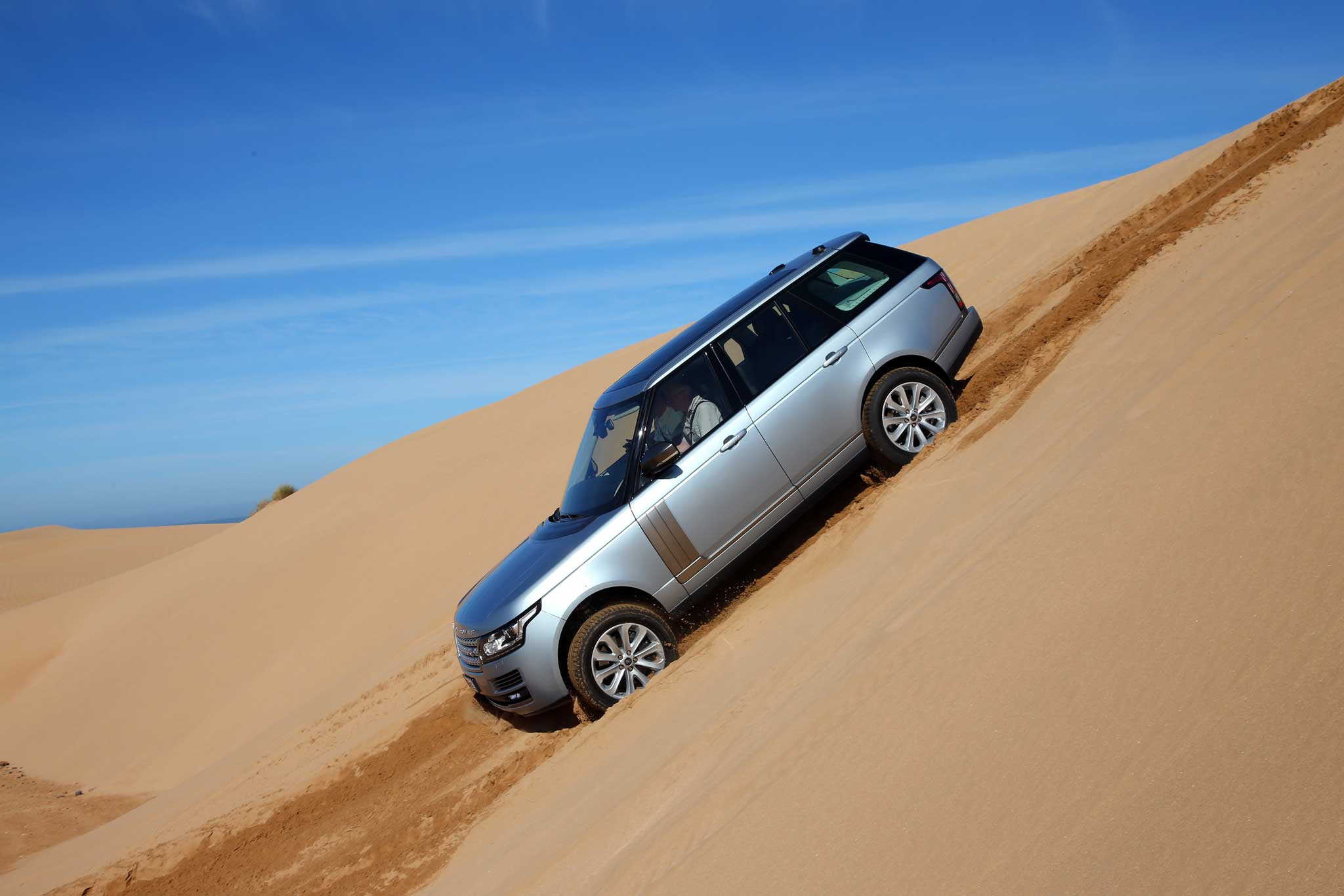Range Rover TDV6
Deft, supple, lithe... Something’s different about the new Range Rover

Price: From £71,295
Engine: 2,993cc, V6 cylinders, 24 valves, turbodiesel, 258bhp
Transmission: Eight-speed paddle-shift automatic, four-wheel drive
Performance: 130mph, 0-62 in 7.9sec, 37.7mpg, CO2 196g/km
Can you spot the differences between this, fourth-generation, Range Rover and its predecessor? To be sure, you need to be well up on your Range Rover nuances. Even then what you might not be able to tell is that the new one weighs up to 420kg less than the last one.
Some of this colossal weight saving, equivalent to five substantial adults, has come about as the body and chassis structure is now made from aluminium; more results from the virtuous circle of weight reduction, which means less engine is needed to haul less car.
You can still have a 5.0-litre, 510bhp supercharged V8 or a 4.4-litre, 339bhp V8 turbodiesel, but its new-found light-footedness means the 3.0-litre, 258bhp V6 turbodiesel used in the Discovery can now find a home under the Range Rover bonnet and still give the brisk pace that befits Land Rover's grandest product.
Indeed, never has a Range Rover been grander: its creators regard it as much a rival to a Bentley or a Mercedes-Benz S-class as to high-end SUVs such as a Porsche Cayenne or a BMW X5.
But back to those old-versus-new differences. Most obvious are the dummy, vertically slatted vents on the flanks, formerly ahead of the front doors, now on them, as nothing more than a garnish to reduce the visual impression of length. There are the little tongues licking around the corners from the front and rear light units. Look longer and you'll notice that the nose is shorter, the windscreen leans back more racily and the waistline rises a little as it heads rearwards, all designed to give a more dynamic stance. The roof is a little lower, while length, width and wheelbase have all grown slightly. Rear passengers benefit the most from this, with truly decadent lounging room now on offer.
Yet for all that, the new Range Rover seems somehow more compact. Visually this is because the wheelarches hug the wheels more tightly, making the bodywork appear less burdensome, and dynamically it's the result of the lower weight, meaning it feels almost lithe.
This is best experienced in the lightest version, the TDV6. Thanks to its massive 443lb ft of torque, it accelerates with a laid-back ease that should please anyone planning on tackling treacherous terrain in a hurry. Given the right circumstances it can reach 62mph in 7.9 seconds and waft onwards to 130mph.
The V6's other great asset is its deft, supple ride over bumps combined with steering and handling of amazing precision in a car so large and tall. It's no sports car, but neither does it lumber.
The V8s, though faster, thud and shudder more heavily into potholes and feel too stiff when cornering, perhaps because of their built-in anti-roll system.
Off-road prowess is a Range Rover given, so you know it can drive along the sides of sand dunes with barely any tail-slippage and can clamber along rocky riverbeds before clawing its way back up the bank while still on standard road tyres. Terrain Response 2 is the latest version of the automatic system which makes sure each wheel receives power or braking as dictated by what lies beneath, and whose "probability estimators update 100 times a second" in sorting out how to do it. The extraordinary part is that it does so while keeping occupants in near-silent, air-conditioned, touch-screen luxury with barely a body-wobble.
Normally there's damage when two worlds collide, but not here. I am not a lover of outsize 4x4s, but somehow this Range Rover transcends the opprobrium that is my default position. It's brilliant.
Join our commenting forum
Join thought-provoking conversations, follow other Independent readers and see their replies
1Comments